Teeth Whitening Treatment | Cosmetic Dentistry | LYGOS 2025
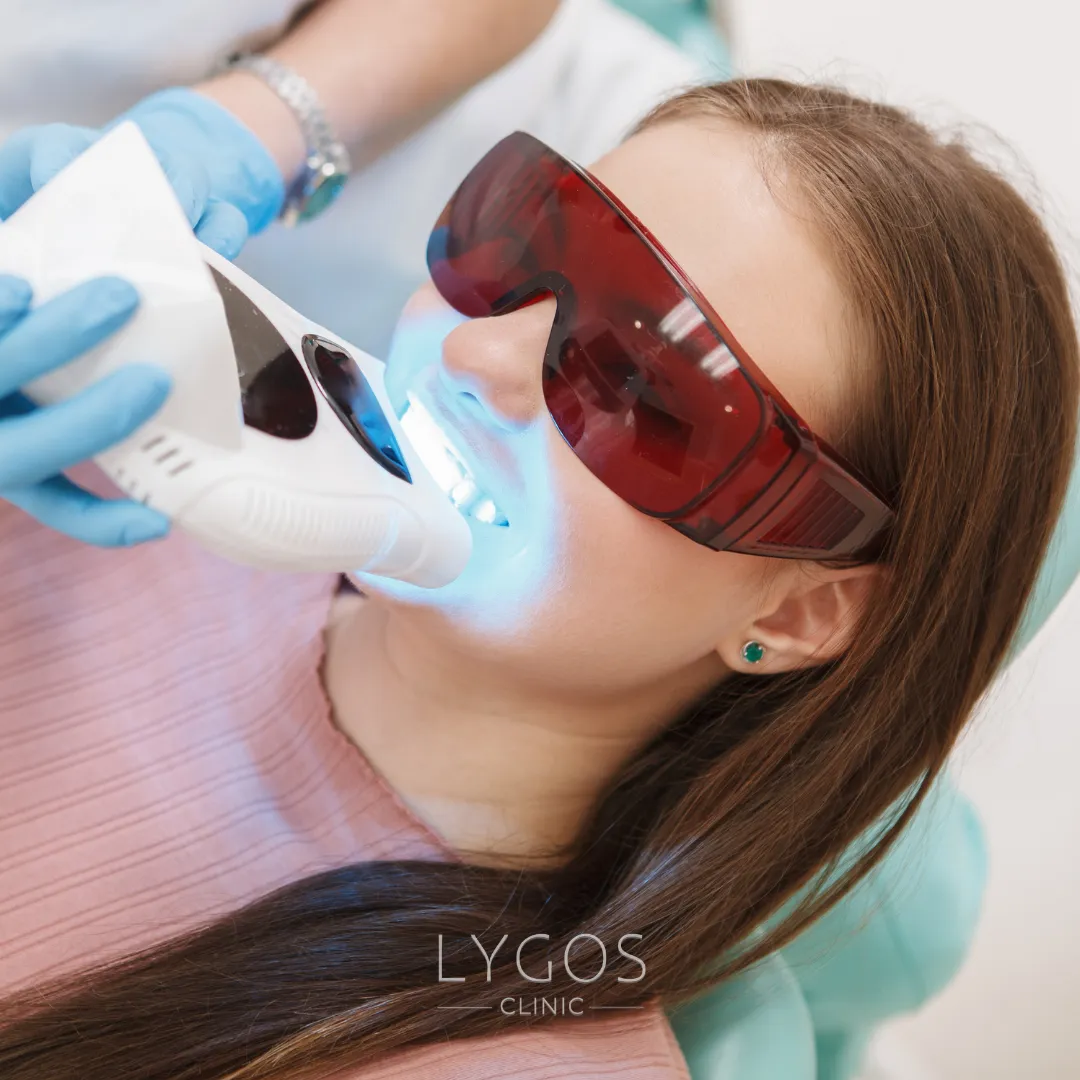
What is Teeth Whitening Treatment?
Teeth whitening treatment should be done correctly. For this, you should act under the guidance of a specialist dentist. In this way, it is considered a safer and more effective method. However, it is important to consider some of the potential risks of teeth whitening. The most common side effects of teeth whitening include temporary tooth sensitivity and gum irritation. These side effects usually go away on their own within a few days.
However, in some cases they may last longer. In rare cases, teeth whitening procedures can damage tooth enamel. This can lead to long-term tooth sensitivity and other dental problems. There is some concern about the long-term effects of over-the-counter teeth whitening products in particular. These products can be abrasive. If used too often or for too long, they can damage tooth enamel. Also, some research suggests that long-term use of teeth whitening products may increase the risk of oral cancer.
Therefore, it is important that teeth whitening procedures are only carried out under the supervision of a dentist. By assessing your oral health, your dentist can determine whether teeth whitening is safe and appropriate for you. He or she can also recommend the best teeth whitening method for you. He or she can provide guidance to minimize the risks associated with the treatment.
Making informed decisions about teeth whitening ensures that you have a healthy and beautiful smile. By seeing your dentist regularly, you can ensure that your teeth whitening treatment is safe and effective. In this article, is teeth whitening treatment harmful? Why do teeth turn yellow? We will address these questions.
Is Teeth Whitening Treatment Harmful?
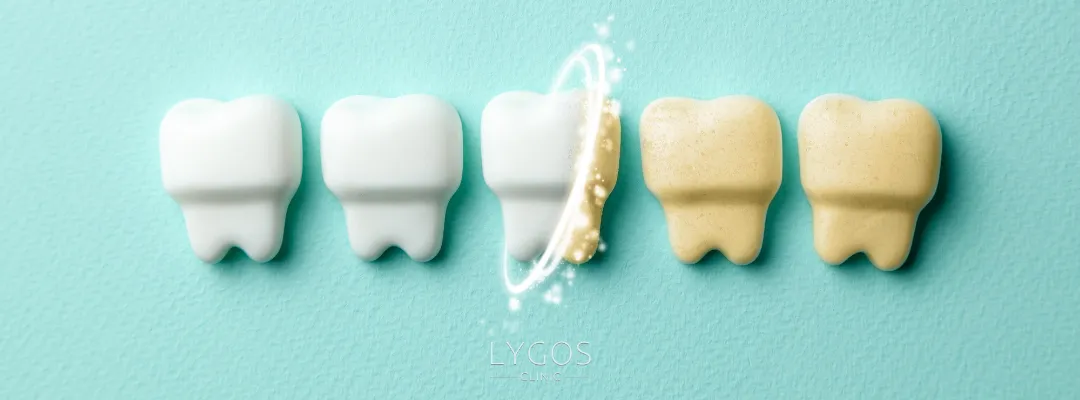
It is important to remember that teeth whitening treatment should only be done under the supervision of a dentist. By assessing your oral health, your dentist can determine whether teeth whitening is safe and appropriate for you. He or she can also recommend the best teeth whitening method. In this way, he or she can provide you with guidance to minimize the risks associated with the treatment.
Is teeth whitening treatment harmful? To answer the question, over-the-counter whitening products can be abrasive. If used too often or for too long, they can damage tooth enamel. It is important to follow the instructions for these products carefully and not exceed the recommended frequency of use. If you experience any discomfort or sensitivity while using an over-the-counter whitening product, you should stop using it immediately and consult a dentist.
In conclusion, teeth whitening can be safe when done properly and under professional guidance. Despite all these details, it is important to consider the potential risks associated with the procedure. By meeting regularly with your dentist, you can ensure that the whitening process is safe and effective.
Why Do Teeth Turn Yellow?
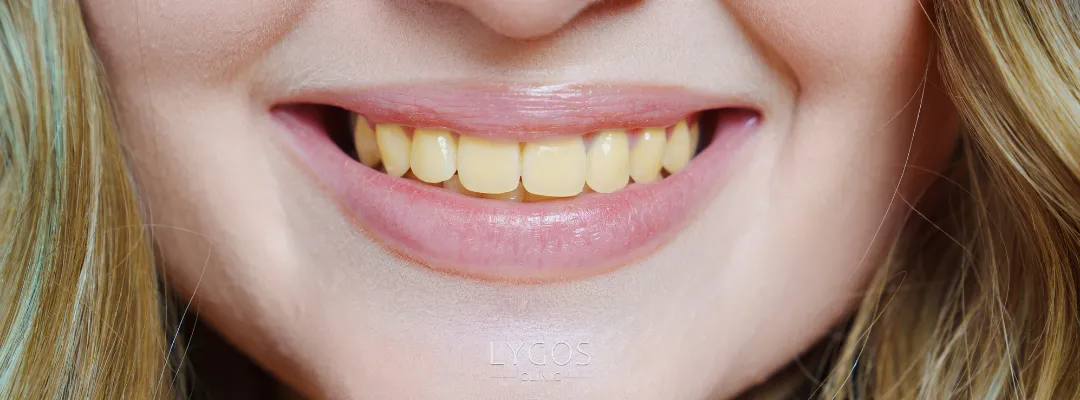
Everyone dreams of a bright, white smile, but may not know exactly why teeth turn yellow. Tooth discoloration and stains can occur for many reasons, from lifestyle habits to genetic factors and age-related changes. Understanding the causes of tooth discoloration can help you take the necessary steps to maintain a healthy, white smile. So, why do teeth turn yellow?
Lifestyle Habits: Smoking and frequent consumption pigmented beverages such as coffee, tea and red wine can lead to stained teeth. In addition, sugary and acidic foods can also cause discoloration by eroding tooth enamel.
Genetic Factors: Some people are genetically more prone to tooth discoloration. The thickness and structure of the enamel can affect the natural color of the teeth. Your genetic heritage plays an important role in this.
Aging: With age, the enamel becomes thinner and the underlying dentin layer becomes more visible. Since dentin is naturally more yellow in color, teeth begin to look more yellow with age.
Oral Hygiene: Poor oral hygiene can lead to plaque and tartar buildup, which can cause yellowing and stains on teeth. Regular brushing, flossing and regular check-ups with your dentist can help prevent these problems.
Medication Use: Some medications, especially antibiotics and antihistamines, can cause tooth discoloration. Long-term use of such medications can affect your teeth.
Understanding why teeth turn yellow gives you the opportunity to take the necessary steps to maintain a white and healthy smile. Adopting healthy habits, practicing regular dental care and discussing whitening options with your dentist when necessary is the secret to having a bright smile.
What Causes Teeth Stains?
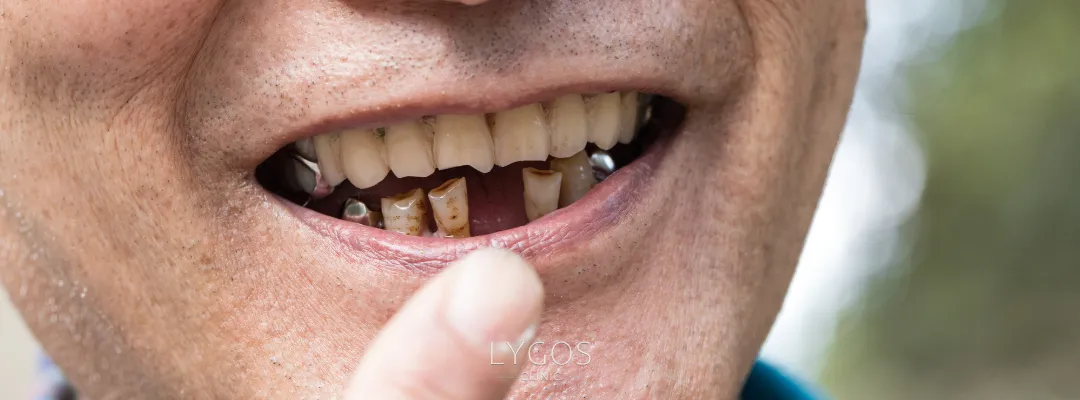
Tooth stains can be caused by many reasons. It is very important for people with this problem to take early precautions. In this way, tooth stains can be removed in a short time. So, what causes tooth stains?
Food and Drinks: Dark colored drinks such as coffee, tea, red wine and cola can stain teeth over time. Acidic drinks such as citrus juices and sports drinks also erode tooth enamel, making teeth more sensitive to stains.
Tobacco Use: Cigarettes and other tobacco products can cause yellowing or browning of teeth due to the nicotine and tar they contain.
Aging: With age, the outer layer of tooth enamel becomes thinner and the underlying yellowish dentin becomes more visible. This causes teeth to look more yellow or dull over time.
Poor Oral Hygiene: Inadequate brushing and flossing causes plaque and tartar to build up on the teeth. This can lead to tooth discoloration and staining.
Medication Use: Some antibiotics, especially tetracycline, can cause permanent discoloration of teeth when taken during childhood.
Genetics: Some people may genetically have darker or yellowish teeth. In cases where tooth color is determined by genetic factors, whitening procedures may be less effective.
Trauma: When teeth are injured or subjected to trauma, the color of the tooth may darken or turn gray. Such discoloration is usually related to damage to the internal structure of the tooth.
Fluorosis: Excessive exposure to fluoride during childhood can cause white spots or streaks on the teeth. This is particularly associated with the use of fluoridated water or toothpaste.
How to Remove Stains from Teeth?
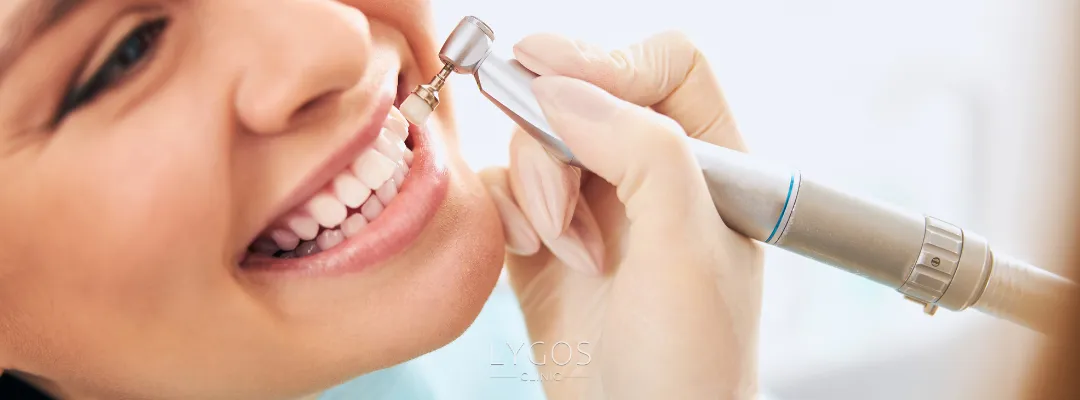
You can take several steps to maintain the whiteness of your teeth and prevent staining. These steps range from oral hygiene to lifestyle habits and can help you achieve a healthy, white smile. Here’s what to do to remove tooth stains:
Pay Attention to Oral Hygiene: Brush and floss regularly to prevent plaque and tartar buildup. Brushing twice a day and flossing daily will help prevent stains and discoloration on the surface of your teeth.
Avoid Foods and Drinks That Cause Staining: Remember that coffee, tea, red wine, and dark-colored foods and drinks can stain your teeth. Rinsing your mouth with water after consuming such products can help minimize staining. Also, limiting the consumption of these beverages contributes to keeping your teeth white.
Quit Smoking: Smoking or using tobacco products can cause yellowing and staining of your teeth. Quitting smoking is one of the most effective ways to prevent tooth discoloration and improve your overall oral health.
Regular Dentist Visits: Visiting your dentist regularly helps to remove stains from the surface of your teeth as well as maintain your overall dental health. Professional cleanings keep your teeth white and help prevent gum disease.
Consider Professional Teeth Whitening: If your teeth are severely stained or discolored, professional teeth whitening treatments can help restore the natural brightness of your smile. Your dentist can recommend the most suitable whitening method and guide you through the treatment process.
In summary, tooth discoloration and stains can be caused by many factors, from lifestyle habits to genetics and age-related changes. Paying attention to oral hygiene, limiting stain-causing foods and drinks, quitting smoking and regular visits to the dentist will help keep your teeth white. If you are concerned about tooth discoloration or staining, be sure to talk to your dentist about professional teeth whitening options.
How is Teeth Whitening Treatment Performed?
Teeth whitening is an effective method used to achieve an aesthetic smile. This process is usually carried out by applying peroxide-based whitening products directly to the teeth. These products are applied to the tooth surface with a brush or thin strips. This method is usually used once or twice a day for 10 to 14 days. This process lightens the teeth by one or two shades, giving them a whiter and brighter appearance. Teeth whitening methods vary according to application techniques and areas. So, how is teeth whitening treatment performed?
Home Teeth Whitening: In this method, special whitening trays suitable for the person’s oral structure are prepared. A certain amount of whitening gel (usually 10-15% carbamide peroxide or hydrogen peroxide) is applied to the prepared trays. The trays are used for 4-6 hours during the day or overnight. The duration of treatment is usually between 10-15 days and provides a significant brightening of the color of the teeth.
In-Office Teeth Whitening (Clinical Whitening): This method is also known as “laser teeth whitening” and is applied by the dentist in a clinical setting. This method gives results in a shorter time compared to others. The dentist applies whitening gel on the teeth and activates the gel with the help of UV light or laser. The process takes about an hour and provides a fast whitening.
Combined Teeth Whitening (Home + Office Whitening): In this method, whitening is applied both in the clinic and at home. After the whitening procedure in the clinic, the process is supported by using whitening trays at home for 2-3 days. This combination helps to achieve more permanent and effective results.
Single Tooth Whitening (Internal Whitening): This method is applied for teeth that have changed color after root canal treatment. The filling in the tooth is removed and whitening gel is applied to the opened cavity. The tooth is then covered with a temporary filling. This process is repeated at 3-day intervals until the desired color is reached.



